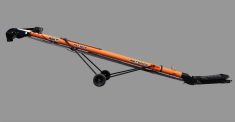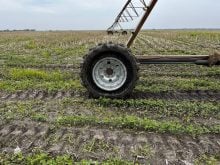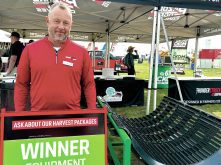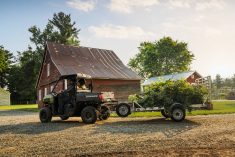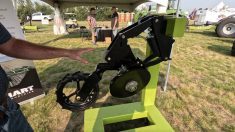A variety of parts on ag equipment and vehicles are designed to have a friction or interference fit, which means components fit together so tightly they maintain their position relative to each other without any kind of fastener holding them in place. Bearing races, for example, remain fixed tightly in a housing this way. It’s an engineering procedure that works very well to keep things in place.
The trouble is, removing and reinstalling some tightly-fitted replacement parts can sometimes be difficult. But there is an easy way to help many parts easily slide into position: simply heat or cool them. An extreme change in temperature causes a part’s dimensions to change. A lot of heat makes things expand. Conversely, as you’d expect, cooling will cause them to contract. Often that subtle change in dimension is enough to allow a part to simply drop into place, which prevents having to beat on it with a hammer and possibly damage it.
In this Shop Class example, cooling new suspension bushings that had to be installed in a set of replacement leaf springs makes for a good demonstration of that effect. The bushings are designed to stay firmly in position in the end of each leaf spring and not move, which prevents any wear to the leaf spring.

Before attempting to install the bushings, we placed them in a deep freeze for a couple of hours. It was then possible to tap them part way into position with a soft-faced hammer. Next, a small hydraulic press was used to push them all the way home. All the bushings were easily seated this way, without damage.
The press probably could have pushed the bushings into position without cooling them down, but it would have taken much more force and increased the risk of damage to the thin metal sides of the bushings, which have a rubber centre.

But if a part needs to expand in order to get it to seat in position, such as the ring gear on an engine flywheel, be careful to apply the heat as evenly as possible to avoid distortion.
If a hand-held torch is used, keep it moving around the part to avoid uneven heat build up in one area. That will reduce the distortion risk. An old mechanic’s trick is to use a portable propane space heater to do the job. Putting the part in front of the heater will allow a broader flow of heat than a small torch supplies to blow over the entire part at once (unless the part is really large), heating it evenly. Putting the part in an oven also achieves the same result, applying heat evenly.
Read Also

Claas brings 1000 Series SP forage harvesters to Canada
In mid-August, Claas unveiled its new line of Jaguar forage harvesters at an event in Visalia, California, deep in the heart of that state’s dairy region.
Heating one part while cooling its mate magnifies the affect and makes installation even easier, although it’s often impractical to do that because one component is frequently part of a large housing.




